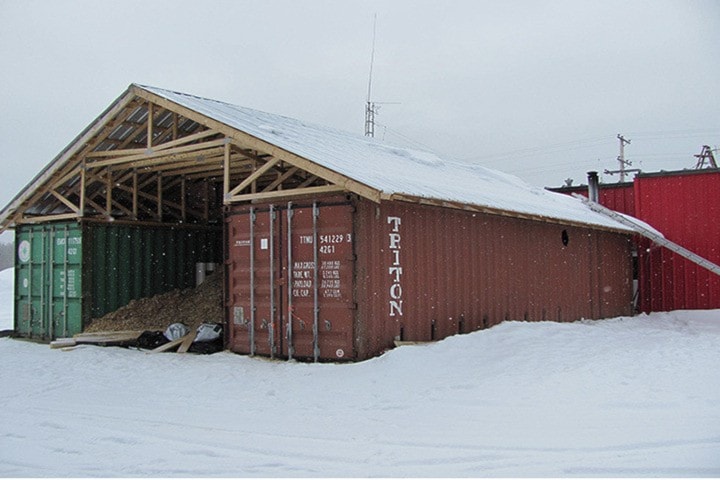Arrow Lakes News
The possibility of turning wood waste into heat in Nakusp was discussed when Wood Waste 2 Rural Heat project coordinator David Dubois met with Peter Welkerling, from the Nakusp and Area Chamber of Commerce, Hugh Watt and Beth McLeod from True North and NACFOR’s Tom Zeleznik last week.
Wood Waste 2 Rural Heat (WWRH) is a project that aims to supply 15 per cent of B.C.’s commercial, institutional and residential energy via biomass thermal (waste wood-generated heat). And according to the WWRH website, this would mean big benefits for both the economy and environment.
An important first step is to identify people who are interested in being clients, said Dubois, citing hospitals and schools who may be interested in a cheap heating source. For areas like Nakusp where natural gas – the biggest competitor to biomass heating in terms of pricing – isn’t used, there are many possibilities.
Biomass is usually cheaper than other methods of heating. Where heating costs using natural gas are about $10-11 per Gigajoule and pellets comparable, said Dubois, propane (depending on delivery costs, etc) is approximately $20-30 per GJ, and electricity around $22-24 GJ, biomass prices out at around $3-6 per GJ.
That’s a significant savings, but of course capital investment is also significant, said Dubois. Don’t expect to install biomass heating at your home just yet.
“If you’re spending $4-$5,000 a year it makes sense to look at some sort of a (biomass) heating system,” said Dubois. “If you’re spending less than that, the economics are marginal because your capital costs are getting too high.”
One of the limitations is proximity, said the WWRH project coordinator, as the wood waste plant is connected to heat-receiving clients via pipes. The cost to put the pipes in the ground is a deciding factor: the revenue from a client must be worth the investment in a length of pipe.
Another factor is the cost of transporting fuel to the heat plant, but with an abundant local waste wood source, transportation can be kept local and costs low. The fuel itself makes a difference, with different boilers appropriate for different kinds of fuel (wet, dry, pellets, etc).
The plant itself and associated equipment takes up space, another requirement to get a plant up and running. A 20-foot storage container can house a plant, for example, but the size is dependent on design which is in turn dependent on heating requirements and the kind of fuel being used.
A Fruitvale business that produces soundboards for musical instruments uses waste wood heat for kilns and heating the building, said Dubois, which is a great showcase for the community to see what a project looks like.
Although the technology is relatively new in North America, Dubois said there are literally hundreds of thousands of wood waste projects in Europe.
“We have more fuel that we can shake a stick at,” he said, apologizing for the pun. “It’s finding the deployment locations, getting them up and running, getting the knowledge to operate them.”
The two main drivers of biomass are economic and environmental considerations, Dubois said. Citing European studies, he added that the amount of money that stays in the community with a biomass project that uses locally source fuel is approximately 70 per cent as compared to 10 per cent that stays with fossil fuel use.
